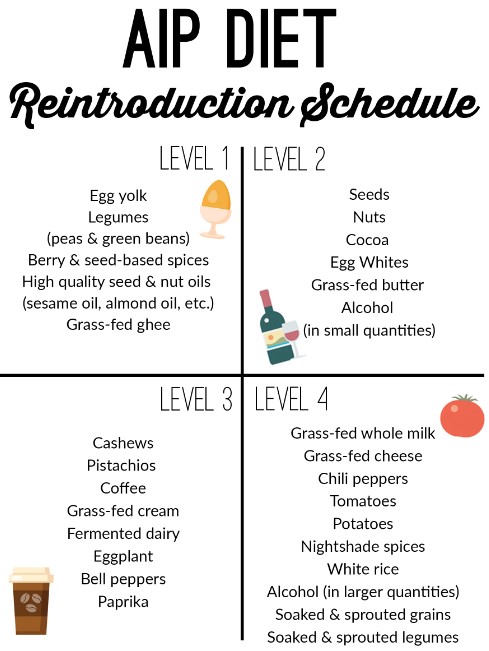BOURSESSENEGAL – The AIP diet, or Autoimmune Protocol diet, focuses on healing the gut and reducing inflammation in the body. Designed for those with autoimmune conditions, this diet eliminates foods that can trigger inflammation while emphasizing nutrient-dense options. If you’re curious about how the AIP diet can enhance your health and well-being, you’re in the right place. Let’s dive into what the AIP diet entails, its benefits, and practical tips for getting started.
What is the AIP Diet?
The AIP diet is an elimination diet that aims to reduce inflammation and heal the gut. It focuses on eliminating foods that may cause autoimmune flare-ups. By following this diet, many individuals report improvements in symptoms related to autoimmune disorders, including fatigue, joint pain, and digestive issues.
Key Components of the AIP Diet
The AIP diet consists of two main phases: elimination and reintroduction.
1. Elimination Phase
During this phase, you will remove foods that are known to trigger inflammation. This includes:
- Grains: Wheat, rice, oats, and other grains are eliminated.
- Legumes: Beans, lentils, and peanuts are avoided.
- Dairy: All dairy products are removed.
- Nightshades: Tomatoes, peppers, eggplants, and potatoes are excluded.
- Processed foods: Foods with additives and preservatives are not allowed.
- Refined sugars: Sugary foods and drinks are cut out.
2. Reintroduction Phase
After a period of strict elimination (usually 30 to 90 days), you gradually reintroduce foods one at a time. This helps you identify any food sensitivities. It’s essential to monitor your body’s response to each food reintroduced to understand what works for you.
Benefits of the AIP Diet
The AIP diet offers several potential benefits, especially for those with autoimmune conditions. Here’s what you might experience:
1. Reduced Inflammation
By eliminating inflammatory foods, many people find that their inflammation decreases. This can lead to reduced pain and discomfort associated with autoimmune diseases.
2. Improved Gut Health
The AIP diet focuses on nutrient-dense, whole foods that support gut health. Foods rich in vitamins, minerals, and fiber can help restore gut integrity and promote a healthy microbiome.
3. Enhanced Energy Levels
As inflammation decreases and gut health improves, many individuals notice an increase in energy levels. This can help combat the fatigue commonly associated with autoimmune conditions.
4. Better Immune Function
The AIP diet encourages foods that support immune function. By providing essential nutrients, you may bolster your immune system’s ability to function optimally.
5. Weight Management
Some individuals find that following the AIP diet helps with weight management. By focusing on whole foods, you may naturally reduce calorie intake while increasing nutrient consumption.
Foods to Include on the AIP Diet
While the AIP diet eliminates many foods, it also encourages a variety of nutritious options. Here are some foods to include:
1. Vegetables
Focus on a wide range of vegetables, especially leafy greens, cruciferous vegetables, and root vegetables. These provide essential vitamins, minerals, and antioxidants.
2. Fruits
Fruits like berries, apples, and pears are excellent choices. They offer natural sweetness along with fiber and nutrients.
3. High-Quality Proteins
Include lean meats, fish, and organ meats. These foods provide protein and essential fatty acids that support overall health.
4. Healthy Fats
Incorporate healthy fats from sources like avocados, olive oil, and coconut oil. These fats support brain health and help reduce inflammation.
5. Bone Broth
Bone broth is rich in collagen and nutrients that support gut health and can aid in the healing process.
Getting Started with the AIP Diet
Transitioning to the AIP diet can feel overwhelming at first, but with a structured approach, it becomes manageable. Here’s how to get started:
1. Educate Yourself
Familiarize yourself with the principles of the AIP diet. Understanding what foods are allowed and which ones to avoid will help you navigate this lifestyle change effectively.
2. Meal Planning
Plan your meals ahead of time. Create a weekly meal plan that incorporates AIP-compliant foods. This can help you avoid temptation and ensure you have the necessary ingredients on hand.
3. Read Labels
When shopping, always read food labels. Look for hidden ingredients that may not comply with the AIP diet. Avoid processed foods with additives and preservatives.
4. Experiment with Recipes
Explore AIP-friendly recipes to keep your meals exciting. There are countless resources available, including cookbooks and online blogs dedicated to AIP cooking.
5. Keep a Journal
Maintain a food journal to track what you eat and how you feel. This can help identify any potential food sensitivities during the reintroduction phase.
Common Challenges and How to Overcome Them
While the AIP diet offers numerous benefits, it can come with challenges. Here are some common issues and tips to overcome them:
1. Social Situations
Dining out or attending gatherings can be tricky. Communicate your dietary needs to hosts, and consider bringing your own AIP-friendly dishes.
2. Cravings
Cravings for eliminated foods may arise. Find healthy alternatives or distractions, such as going for a walk or trying a new hobby.
3. Nutritional Balance
Ensure you’re getting a variety of nutrients by incorporating a wide range of fruits, vegetables, and proteins into your meals.
Conclusion
The AIP diet offers a promising approach to managing autoimmune conditions and improving overall health. By focusing on whole, nutrient-dense foods and eliminating potential triggers, you can help reduce inflammation and promote healing. Remember, every individual’s response to the AIP may differ, so listen to your body and adjust as needed. As you embark on this journey, stay patient and committed to finding what works best for you. With dedication and awareness, the AIP can be a powerful tool for enhancing your well-being.
REFERENCE : https://www.health.com/



